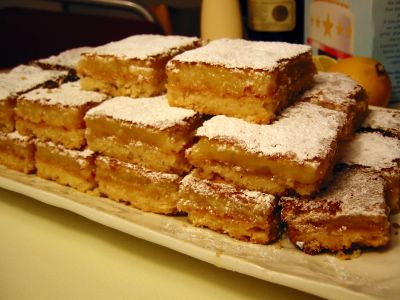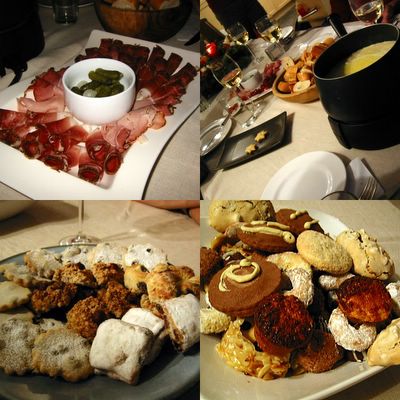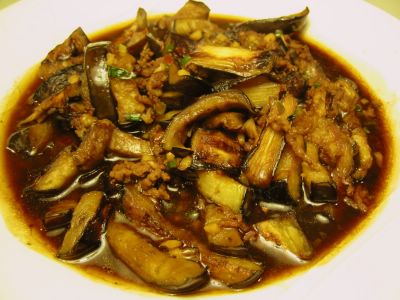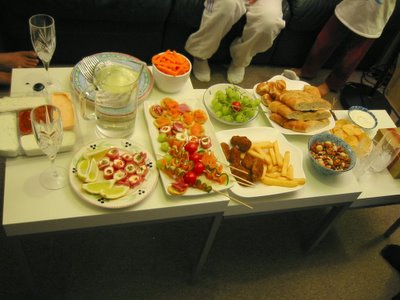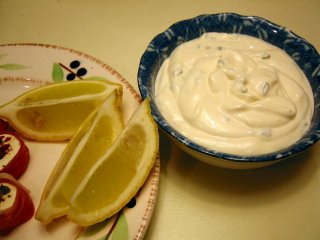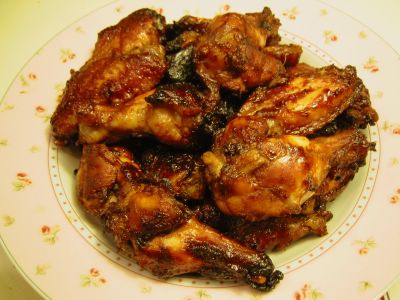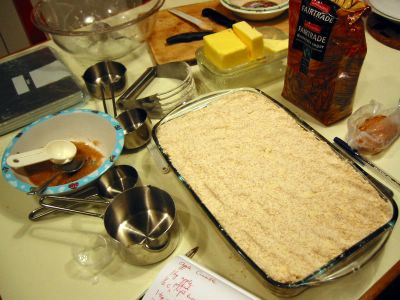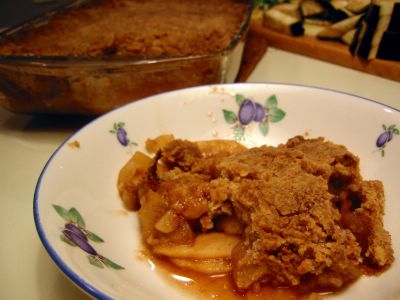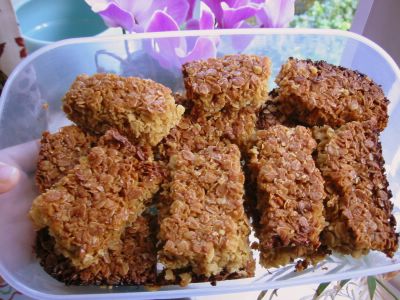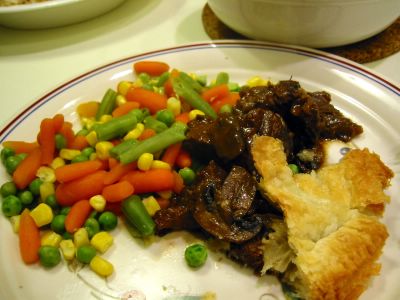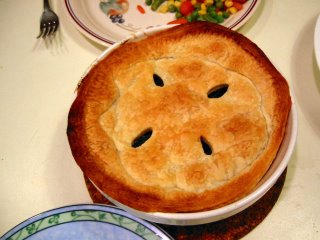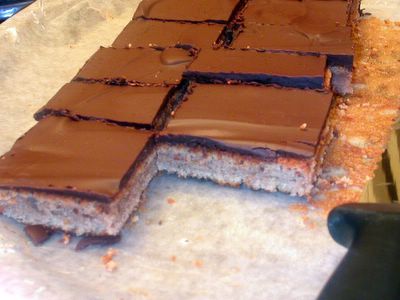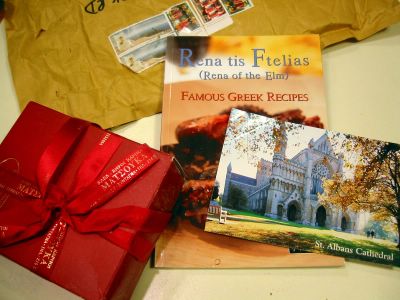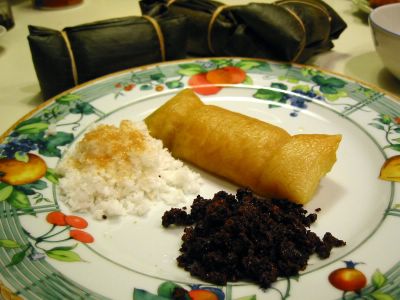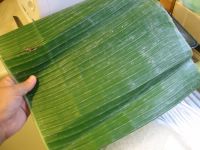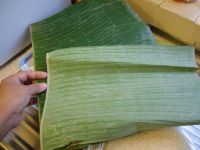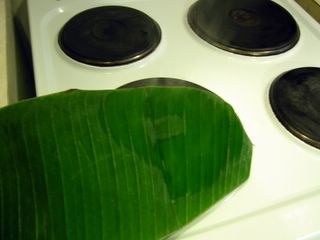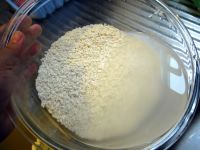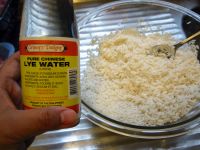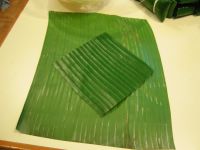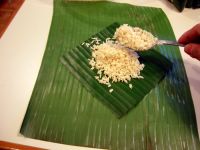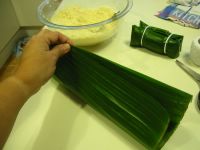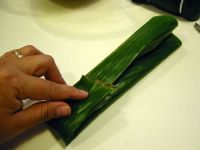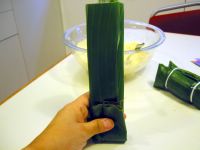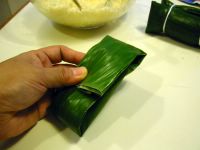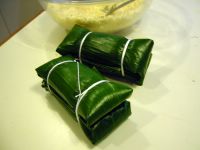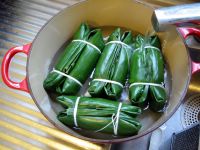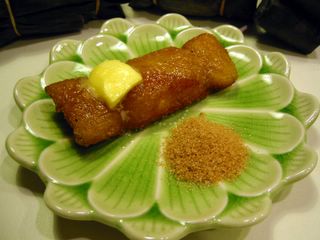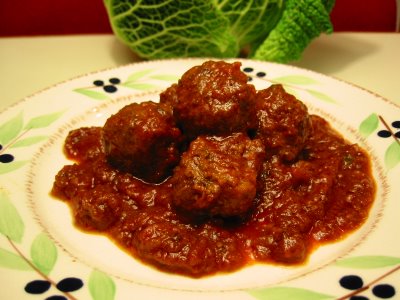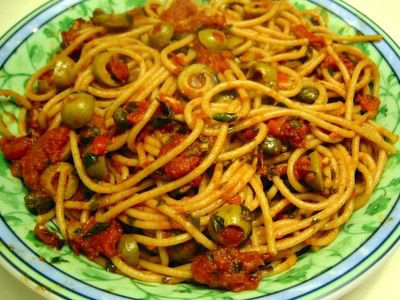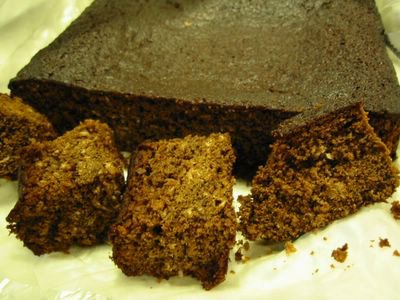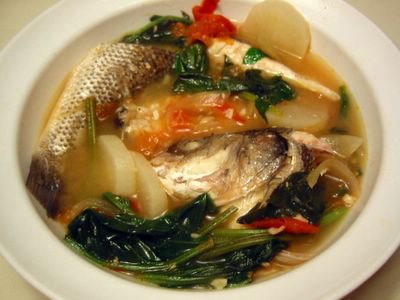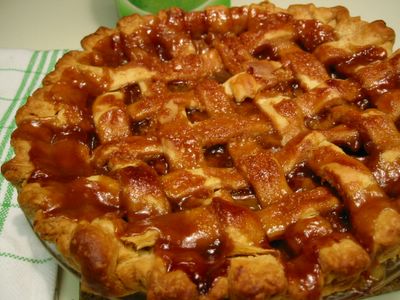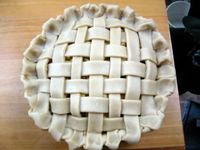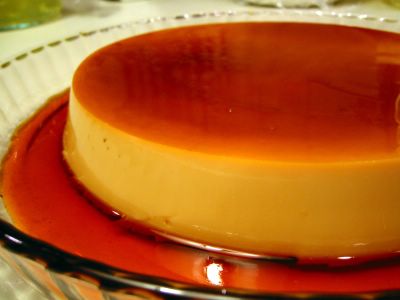
I should have posted this a few days back but I couldn't find the other pictures I've taken a month ago. Anyhow, I'll have to make do with this sliver of Leche Flan to illustrate the point.
Leche Flan is a Spanish legacy to the Philippines. It's very similar to the Creme Caramel except that we generally use canned milk rather than fresh. I say 'generally' since there are lucky people who has access to cow's or carabao's (water buffallo) milk and use that which results in a very creamy distinctly flavoured confection. Unlike us, who still have to find a farmer-relative whose carabao is currently lactating. :( As such, the rest of the Filipino household is relegated to evaporated and condensed milk. Though I think they're not entirely inferior, they in fact impart a nutty taste to dishes. And of course they're a more practical choice due to the high incidence of dairy spoilage because of the heat in the Phils.
We usually make this every annual fiesta in our barrio. Whenever I see and/or eat leche flan, the memory that comes to mind is 'fiesta'. We'd make dozens of these and serve them with sweetened macapuno and ube. Sometimes I'd help my aunt to caramelise the sugar which we do directly in the 'llanera' (molds) by heating the sugar right in there. So the llanera has to be metal and usually oval in shape. I know it's probably easier to do it by melting/cooking the sugar caramel all in one batch then pouring it onto each mold. But my aunt, who's either masochistic or just following tradition, still do it in each and every llanera. My challenge when I wanted to make this here is to search for metal molds. Solid baking pans should be alright but they additionally has to withstand direct heat, i.e., heated up on the cooking hob.
As for the custard itself, it can be of any permutation of the ratio of egg, milk, and sugar. Some use the whole egg, while we always use just the egg yolks. I've also never tried to bake this in a bain marie (water bath) which will work perfectly. Steaming is our preferred traditional method for this, making sure the llaneras are sealed well with foil or paper (my aunt just use plain bond paper) on top and tied with a string or rubber band on the side. If moisture from the steam comes in, it will make the caramel a bit watery. It's still okay but not as appetising as a well sealed one.
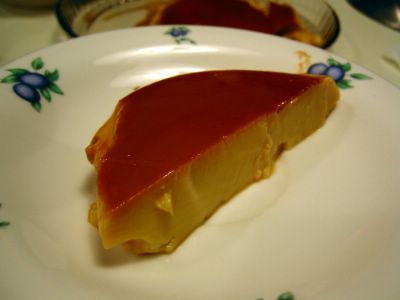
Leche Flan
10-12 egg yolks*
1 x 400 g cans evaporated milk
1 x 400 g can condensed milk
1 tsp vanilla extract or lemon zest (optional)
granulated sugar
- Put about 2-3 Tbsp sugar in each of the metal molds (this will depend on how big they are). Place the molds one at a time on a cooker hob and melt the sugar gently. Let it caramelise and melt to a golden brown - DO NOT BURN IT. Swirl it around the mold so that there is just a thin film covering the bottom. Remove from heat and cool completely. (Caramelised sugar will harden and may crack.)
- Mix the egg yolks, milks, and flavouring gently. Do not whisk, you do not want bubbles in it so it will result in a smooth set custard.
- Strain the mixture while pouring it into the metal molds with caramelised sugar.
- Cover tightly with foil, parchment paper, or plain paper. Secure by tying a string or rubber band in its circumference.
- Steam in medium-low heat for 1 hour.
- Remove from steamer and cool completely.
- To serve, run a knife around the edge and invert into a serving plate.

